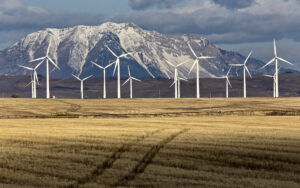Following up on its pledge to make Canada’s electricity grid net-zero emissions by 2035, the federal government is seeking input on a Clean Electricity Standard discussion paper to help ensure a transition that protects ratepayers and assures reliability

Canada’s federal government is seeking input to establish a Clean Electricity Standard in an effort to reach a net-zero grid.
Following up on its pledge to make Canada’s electricity grid net-zero emissions by 2035, the federal government is seeking input on a Clean Electricity Standard discussion paper to help ensure a transition that protects ratepayers and assures reliability
The Liberal government is pushing forward on one of its major 2021 election platform promises to get Canada’s electrical grid to net-zero by 2035, with the release this week of a discussion paper on a proposed Clean Electricity Standard and the simultaneous launch of consultations by the minister of environment and climate change, Steven Guilbeault, towards developing that standard.
Today, roughly 82 per cent of the electricity used in Canada comes from non-emitting sources (hydro, wind, solar, biomass, tidal and nuclear) according to government data. Getting to 100 per cent requires replacing the fossil-fuel burning sources of the remaining 18 per cent as well as adding enough additional non-emitting capacity to meet higher overall electricity demand.
Several provinces — Alberta, Saskatchewan, New Brunswick and Nova Scotia — are still burning coal. A further key challenge is that Canada’s electrical grids are highly fragmented, with very few interconnections. The Territory of Nunavut, meanwhile, still does not have a formal grid, with all 25 communities relying on local diesel generators.
“While Canada has one of the cleanest power grids in the world, we know that we can and should do more,” said Jonathan Wilkinson, minister of natural resources, in a press release. “By modernizing our electricity, we can lower emissions, create good, middle-class energy jobs, and ensure a healthy environment and a healthier economy for communities all across the country.”
Developing a Clean Electricity Standard will help to manage a phase-out of fossil-fuel emitting, electricity-generating assets in a way “that minimizes impacts on ratepayers, maintains reliability, and reduces emissions,” reads government materials.
Consultation process
Government consultation on the Clean Electricity Standard is targeted at understanding the challenges and opportunities in the affected provinces and territories with input from provincial and municipal governments, Indigenous groups, utilities, industry and the general public.
The comments will be critical input to the just-released discussion paper, which sets out a series of 22 questions on topics ranging from Clean Electricity Standard affordability to customers to whether interim targets should be set before 2035. Feedback must be received by April 15, 2022.
“The transition to a net-zero electricity supply by 2035 will be transformational. The effort will involve multiple measures and jurisdictions working together to achieve a clean, reliable and affordable electricity system,” reads the paper.
In 2019, Canada’s electricity sector was the country’s fourth-largest source of greenhouse gas (GHG) emissions at 8.4 per cent. Oil and gas (26 per cent), transportation (25 per cent) and buildings (13 per cent) are the three leading sectors. To date, only Alberta and Nunavut have not committed to a targeted reduction in GHG emissions.
The former province is the highest GHG emitting jurisdiction for the energy sector in Canada, followed by Saskatchewan.
“Achieving a net-zero electricity system throughout Canada represents a large economic, technical, and societal challenge,” reads the paper. “Throughout the transition to an electricity supply that is both net-zero emitting and substantially increased, provinces and territories will determine the measures needed to ensure reliable, affordable electricity within their own jurisdiction.”
Managing off-grid communities
All three of Canada’s territories and off-grid, diesel-powered communities in nearly every province are being given special attention by the government in the consultations for the Clean Electricity Standard.
“The Government of Canada will continue to work closely with provinces and territories as they address these complex challenges, and will support the development of interties to bring clean energy to where it is needed,” reads the paper. “Support for smart grids, interties, and new ways of managing power (such as distributed generation and energy storage) will be helpful in the context of these challenges.”
In addition to transitioning these communities off sources of GHG-emitting energy generation, there is also an acute problem of energy reliability.
Both of these issues, as well as the establishing and execution of a Clean Electricity Standard, will be funded, in part, by the Canada Infrastructure Bank’s $10-billion growth plan that specifically allocates $2.5 billion “for clean power projects (including renewable generation and storage) and electricity transmission between provinces, territories, and regions (including to northern and Indigenous communities).”
Those wishing to provide input on the discussion paper are asked to submit feedback to [email protected].






